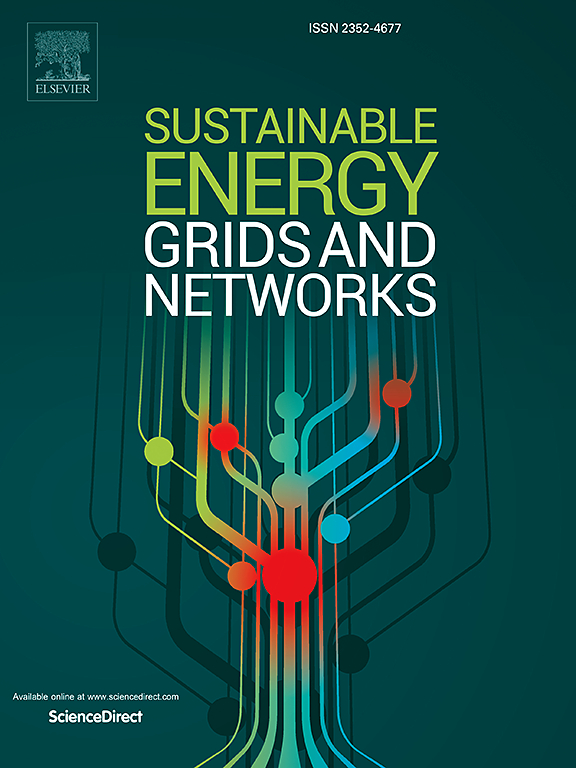用图神经网络替代直流最优潮流进行电网运行风险量化
IF 5.6
2区 工程技术
Q2 ENERGY & FUELS
引用次数: 0
摘要
开发了决策算法(直流最优潮流或直流OPF)的替代品或代理,以加快基于蒙特卡罗(MC)采样的电网风险量化。基于抽样的风险量化允许明确计算与给定的电力需求和供应的概率预测相关的风险。然而,它需要在短时间内解决大量的优化(DC OPF)问题,计算量很大。由于图神经网络(GNN)特别适合于图结构数据的建模,因此可以通过开发图神经网络(GNN)代替物来减轻计算负担。与之前开发GNN替代品来预测母线级(发电机调度)决策或线路流的工作不同,本文提出的GNN模型直接预测电网风险评估所需的区域/系统级数量。也就是说,除了发电机调度和线路流,我们还开发了GNN模型,直接预测区域或系统级备用短缺和减载。使用四个合成网格(Case118、Case300、Case1354pegase和Case2848rte)证明了这些GNN替代品的益处。结果表明,所提出的GNN替代算法在预测电网状态方面比数值求解器快250-800倍,能够快速准确地对电网进行风险量化。结果还表明,直接预测聚集的区域/系统级数量比聚集的总线级预测更准确。本文章由计算机程序翻译,如有差异,请以英文原文为准。
Operational risk quantification of power grids using graph neural network surrogates of the DC optimal power flow
Surrogates or proxies of a decision-making algorithm (DC optimal power flow or DC OPF) are developed to expedite Monte Carlo (MC) sampling-based grid risk quantification. Sampling-based risk quantification allows explicit computation of the risk associated with a given probabilistic forecast of power demand and supply. However, it requires solving a large number of optimization (DC OPF) problems within a short time, which is computationally demanding. The computational burden is alleviated by developing graph neural network (GNN) surrogates, because GNNs are especially suitable for modeling graph-structured data. In contrast to previous works that developed GNN surrogates to predict bus-level (generator dispatch) decisions or line flow, the proposed GNN models directly predict zonal/system level quantities needed for grid risk assessment. That is, in addition to generator dispatch and line flow, we develop GNN models that directly predict zonal or system level reserve shortage and load shedding. The benefits of these GNN surrogates are demonstrated using four synthetic grids (Case118, Case300, Case1354pegase, and Case2848rte). It is shown that the proposed GNN surrogates are 250–800 times faster than numerical solvers at predicting the grid state, and they enable fast as well as accurate risk quantification for power grids. It is also shown that directly predicting aggregated zonal/system level quantities leads to more accurate predictions than aggregating bus level predictions.
求助全文
通过发布文献求助,成功后即可免费获取论文全文。
去求助
来源期刊

Sustainable Energy Grids & Networks
Energy-Energy Engineering and Power Technology
CiteScore
7.90
自引率
13.00%
发文量
206
审稿时长
49 days
期刊介绍:
Sustainable Energy, Grids and Networks (SEGAN)is an international peer-reviewed publication for theoretical and applied research dealing with energy, information grids and power networks, including smart grids from super to micro grid scales. SEGAN welcomes papers describing fundamental advances in mathematical, statistical or computational methods with application to power and energy systems, as well as papers on applications, computation and modeling in the areas of electrical and energy systems with coupled information and communication technologies.
 求助内容:
求助内容: 应助结果提醒方式:
应助结果提醒方式:


